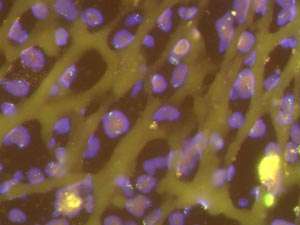Better diagnosis for a rare syndrome

Understanding Li–Fraumeni syndrome (LFS)—a genetic disorder that substantially increases the risk of a young person developing cancer such as the bone cancer osteosarcoma—is a first step to improving diagnosis and counseling.
LFS diagnosis is currently based on empirical factors such as having two first-degree relatives who develop cancer before the age of 40. For Axel Hillmer at the A*STAR Genome Institute of Singapore, this was a crude approach to diagnosis. Along with David Virshup at Duke-National University of Singapore, he led an international team to improve it.
The researchers sequenced the whole genome of four osteosarcoma patients and looked for large rearrangements in chromosomes of the tumor cells. "We tried to find commonalities across these four tumors," says Hillmer. The only gene that was affected in all four was TP53 which encodes a protein essential for a cell's response to DNA damage.
The genomic rearrangement they saw featured a break at the beginning of TP53, in a region called intron 1, which led to a fusion of the front segment of a gene with distant genomic regions. This resulted in a de facto loss of the gene. "It cannot be transcribed any more," explains Hillmer.
The team identified this type of rearrangement in more than 10 per cent of osteosarcoma patients. Significantly, it has not been seen in other cancer types, even though TP53 is a gene commonly mutated or deleted in many tumors.
Given the specificity of the rearrangement for osteosarcoma, Hillmer and his colleagues wondered whether the TP53 rearrangement is present in LFS, which could explain the 30 per cent of cases where no genetic cause can be found with standard methods. They analyzed a family with 12 members affected by LFS and found the same TP53 rearrangement in all affected individuals. "For the first time, we see LFS patients where the TP53 intron 1 rearrangement is in the germline," says Virshup. "We can now make a clear diagnosis."
While not yet having implications for treatment changes, the diagnosis will improve genetic counseling.
Hillmer wants to screen more LFS families to strengthen the link between the rearrangement and the disease. He will also investigate what triggers the initial break in TP53's intron 1 specifically in bone cells. "We plan to identify features in that region that are different in the osteoblast lineage compared to other tissues and cell types," explains Hillmer.
More information: Sebastian Ribi et al. TP53 intron 1 hotspot rearrangements are specific to sporadic osteosarcoma and can cause Li-Fraumeni syndrome, Oncotarget (2015). DOI: 10.18632/oncotarget.3115

















